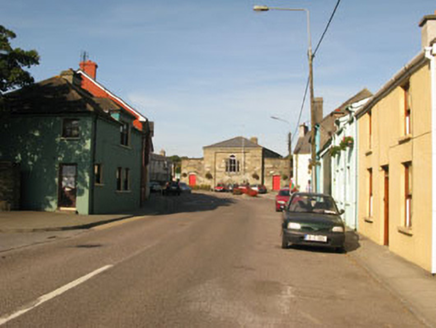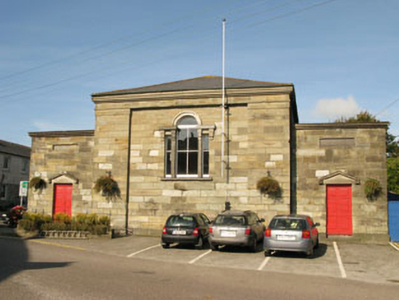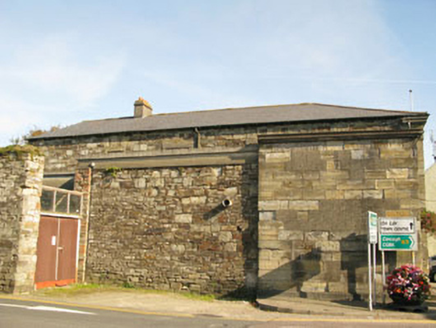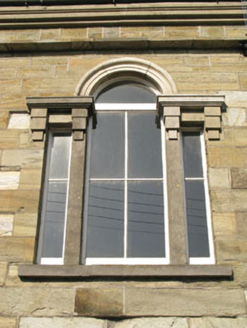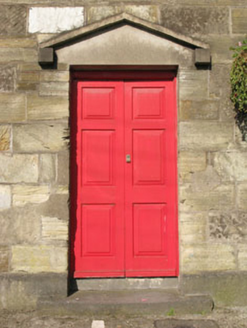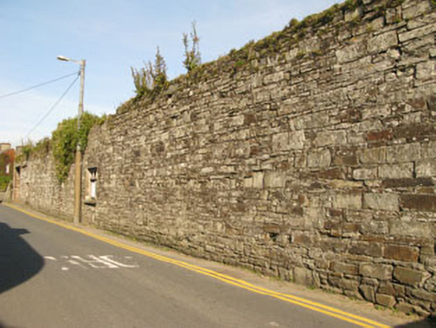Survey Data
Reg No
20846128
Rating
Regional
Categories of Special Interest
Architectural, Artistic, Historical, Social
Original Use
Court house
In Use As
Court house
Date
1825 - 1830
Coordinates
138434, 41310
Date Recorded
16/09/2009
Date Updated
--/--/--
Description
Freestanding three-bay double-height courthouse, built 1829, comprising central block flanked by recessed flat-roofed porches. Hipped and pitched slate roof to central block, having moulded rendered eaves course to front (south-east) elevation, rendered chimneystack and cast-iron rainwater goods. Flat roofs to porches having rendered eaves and parapets. Snecked stone walls with plinth to front elevations and side (north-east, south-west) elevations of porches. Rubble stone walls elsewhere. Square-headed recess to front elevation of central block flanked by corner pilasters framing central window. Recessed panels to front elevations of porches. Venetian window opening with tooled limestone sill and mullions to front elevation. Tooled limestone archivolt springing from impost blocks on stepped corbels. Fixed timber-framed windows and single-pane fanlight. Square-headed door openings to front elevation of porches, having rendered label mouldings on corbels having replacement double-leaf timber panelled doors. Yard to rear (north-west) enclosed by rubble limestone wall with square-headed blind window opening having render sill, raised render surround and exposed render lintel. Enclosing wall comprised of remains of former outbuilding with camber-headed door opening with roughly cut limestone voussoirs and timber battened door. Square-headed carriageway with red brick block-and-start surround, remains of cast-iron sliding door brackets and replacement double-leaf metal gates.
Appraisal
An imposing courthouse which makes a distinct contribution to the surrounding streetscape. Designed by George Richard Pain, who designed many other courthouses across County Cork, it is similar in design and scale to his other early nineteenth century examples. Burnt during the Civil War, it retains bullet holes on the east front. The remains of the gaol to the rear add to its setting and context.
